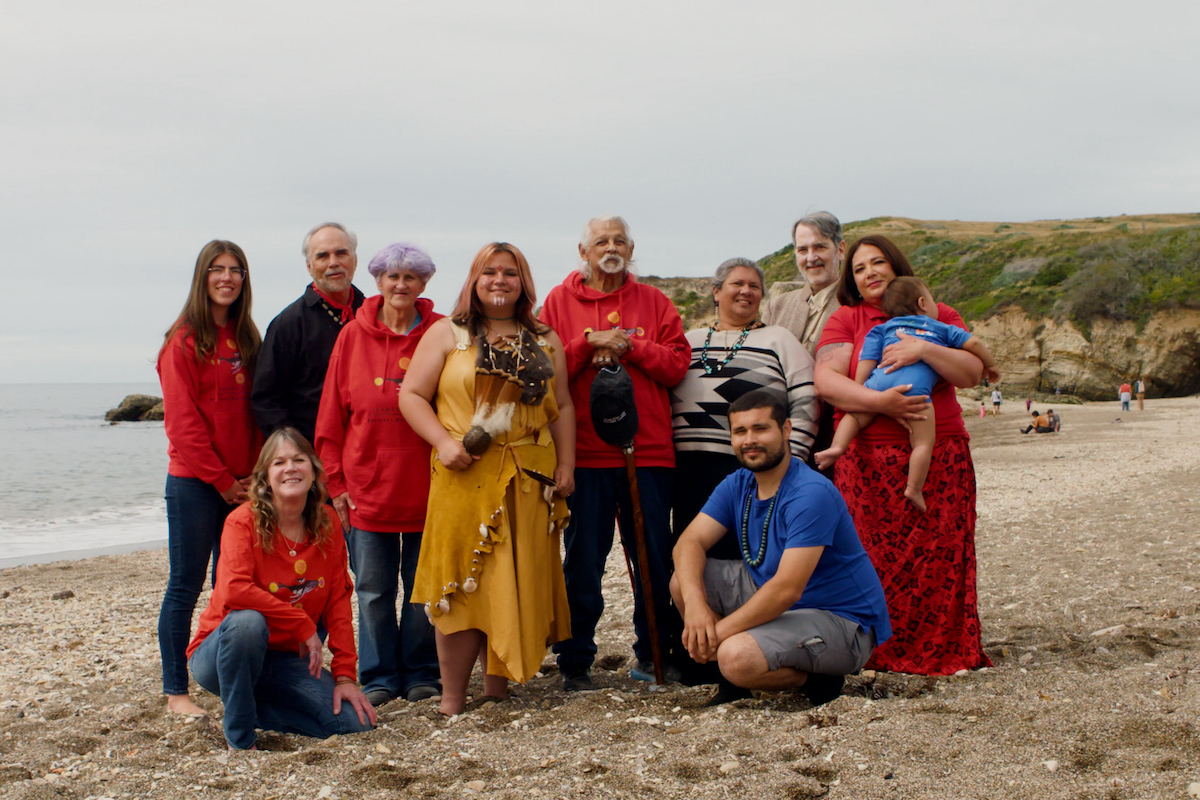The first Chumash-led nomination of a marine sanctuary reached one of its final phases on Friday, when the draft designation was released by the National Oceanic and Atmospheric Administration (NOAA). Set among 5,617 square miles of ocean that stretches along 134 miles of coastline from Montaña de Oro in San Luis Obispo to the Gaviota Coast in Santa Barbara, the Chumash Heritage National Marine Sanctuary will also be the first to be co-led by tribal leaders and government agencies.

The Northern Chumash Tribal Council, led by Chair Fred Collins, has worked on the sanctuary nomination with environmental organizations since 2013. Collins died in 2021, about a month before NOAA announced it would put the nomination forward as a designation, and was succeeded by his daughter, Violet Sage Walker. The tribe described the Central Coast waters as globally significant, holding submerged Chumash sites dating back more than 9,000 years: “The proposed marine sanctuary encompasses the western slope of the underwater Santa Lucia Bank at the base of the continental shelf, a 3,000-meter-deep submarine canyon, three major nutrient upwellings, spawning areas and rookeries, and feeding areas and migration lanes for 13 species of whales and dolphins.”
Among the supporters of the marine sanctuary is the Santa Lucia Chapter of the Sierra Club. Director Andrew Christie noted that the proposed sanctuary was “a priority for the Biden Administration and is part of the federal commitment to protect and conserve at least 30 percent of our lands, freshwater, and ocean by 2030.”
The map of NOAA’s preferred boundary shows the proposed sanctuary lying south of the Monterey Bay marine sanctuary. An area of open water between the two leads to Morro Bay to the east and the 376-square-mile zone set aside for a federal wind energy site to the west, a corridor that could hold as many as 30 cables for the energy project. Establishing the wind farm has been embraced by Congressmember Salud Carbajal, who has also championed the Chumash marine sanctuary, which was first put into motion by his predecessor, Rep. Lois Capps, in 2016.
“The Central Coast has pursued this sanctuary designation for decades, and as our oceans and our communities are facing unprecedented challenges from a changing marine environment, this draft comes at a critical time for our region,” Carbajal said in press release. “I am glad that we finally have a draft that puts this sanctuary’s final approval within reach,” he added, saying he would work with NOAA, the Commerce Department, and stakeholders “to bridge any remaining challenges to making the Chumash Heritage National Marine Sanctuary official by the end of this Congress.”

[Click to enlarge] Credit: Courtesy
As well as tribal and ecological concerns, the draft plan addresses fisheries: “Within this proposed action, there are no proposed regulations pertaining to commercial fishing or concerning the speed or routing of vessels.” However, prohibitions will exist for oil, gas, and mineral exploitation within the sanctuary, new sewage discharge, or dumping of harbor dredge material.
Providing a conduit for the California tribal groups will be the Santa Ynez Band of Chumash Indians, which is the only group of Chumash recognized by the federal government. The plan proposes that the Santa Ynez Band and the State of California collaboratively manage the sanctuary with NOAA. The tribe also notes it intends to work with non-federally recognized Chumash groups “to ensure visitors to the Sanctuary understand the full indigenous history of our region.” Kenneth Kahn, tribal chair for the Santa Ynez Band, stated the designation showed “a strong respect for the indigenous people of our country” and that his tribe was “proud to contribute our cultural and management practices towards protecting this shared resource.”
With the completed draft now public, a 60-day comment period commences, ending on October 25. Information workshops and comment meetings take place in person in September in Grover Beach, Gaviota, and San Luis Obispo, and in October in Lompoc. Similarly, an online workshop and comment meeting will be held in September and October. Full information can be found at sanctuaries.noaa.gov/chumash-heritage.





You must be logged in to post a comment.